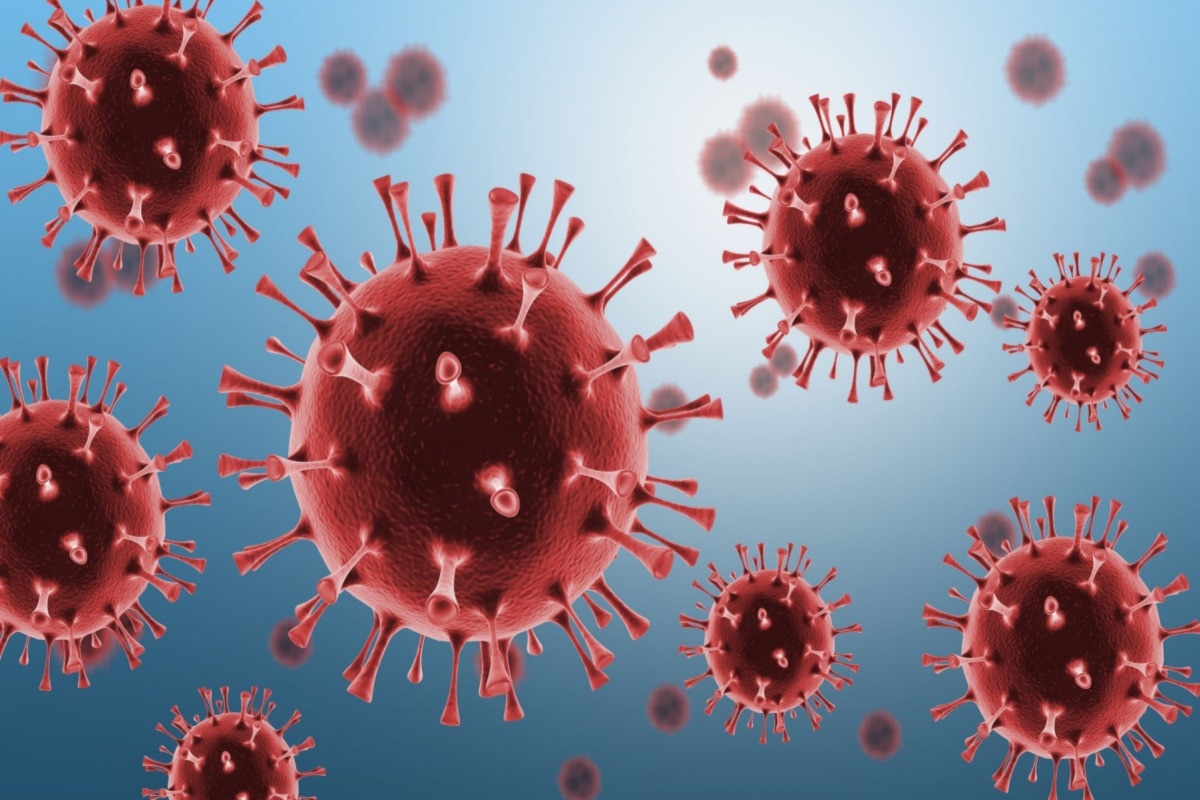In a recent study published in PNAS, researchers found elevated plasma levels of myosin light chain 9 (Myl9) in coronavirus disease 2019 (COVID-19) patients with fatal disease.
 Study: Elevated Myl9 reflects the Myl9-containing microthrombi in SARS-CoV-2–induced lung exudative vasculitis and predicts COVID-19 severity. Image Credit: Billion Photos/Shutterstock
Study: Elevated Myl9 reflects the Myl9-containing microthrombi in SARS-CoV-2–induced lung exudative vasculitis and predicts COVID-19 severity. Image Credit: Billion Photos/Shutterstock
Additionally, these patients showed an accumulation of severe acute respiratory syndrome coronavirus 2 (SARS-CoV-2) in their pulmonary vessels, causing exudative vasculitis.
Background
There is an urgent need to develop novel COVID-19 therapeutics amid the continual appearance of new SARS-CoV-2 variants that evade infection and vaccination-induced immunity. Past studies extensively analyzed autopsy samples from COVID-19 patients and found marked vascular changes in their lungs.
Histological analyses revealed endothelial injury along with cellular infiltration and microthrombi. Intriguingly, pulmonary thrombi were more pronounced in fatal COVID-19 cases. Yet, studies have not described immunological events and factors involved in immunothrombosis accompanied by vasculitis.
About the study
In the present study, researchers investigated the impact of SARS-CoV-2 infection on local inflammatory sites and the systemic immune system. They recruited and divided individuals with COVID-19 based on disease severity. Cohort 1 had lung samples from five deceased individuals, of whom three died due to COVID-19, one due to stomach cancer, and another one died due to hereditary diffuse leukoencephalopathy. Cohort 2 had 177 whole-blood samples, including 123 from individuals with COVID-19. The team also collected 400 blood samples from patients of Cohort 2, at a frequency of once a week from moderate to severely ill and every three days from critically ill COVID-19 patients.
They investigated the pathological impact of SARS-CoV-2 infection in the lungs of three cohort 1 patients who died due to COVID-19. They performed transcriptome profiling by small conditional ribonucleic acid sequencing (scRNA-seq) for blood samples from 21 patients in cohort 2. The team analyzed 57,049 single-cell transcriptomes of peripheral blood mononuclear cells (PBMCs).
Vascular injury or thrombospondin 1 (THBS-1) activates platelets, which, in turn, release Myl9, which forms thrombus-like structures. Thus, the researchers hypothesized that SARS-CoV-2-induced vasculitis activated platelets, leading to the release of Myl9 and the generation of a net-like structure. Since they detected deposition of Myl9/12 with a cluster of differentiation (CD)41+ platelets, they tested whether the plasma Myl9 level correlated with the severity of COVID-19 using an enzyme-linked immunosorbent assay (ELISA) to examine the plasma Myl9 levels in cohort 2.
Study findings
A computed tomography (CT) analysis of the second case (cohort 1) showed COVID-19-related pneumonia. Histological analyses of autopsied lung samples revealed diffuse alveolar damage with fibrosis and extensive cellular infiltration. Immunohistochemistry (IHC) detected distinct immunoreactivity for SARS-CoV-2 spike (S) protein. Field emission-scanning electron microscopy (FE-SEM) results showed aggregated SARS-CoV-2 particles in the tunica media, and elastin van Gieson (EVG) staining of the lung samples revealed thickening and disruption in elastin fibers of the SARS-CoV-2-infected arteries. The arteries in the autopsied lung samples also had exudative vasculitis with SARS-CoV-2 in their blood vessels.
Uniform manifold approximation and projection (UMAP) identified eight clusters in the PBMCs of 21 cohort 2 patients. Compared to moderate cases, fatal COVID-19 cases showed a decreased proportion of lymphoid cell clusters, such as CD4+T cells and B cells, in PBMCs, while the proportion of myeloid cells increased in PBMCs of fatal COVID-19 cases. Importantly, circulating immune cells in fatal COVID-19 cases had more myeloid cells with up-regulation of platelet-activating signature.
Compared to controls, the concentration of Myl9 in the plasma of COVID-19 patients at admission to the hospital was significantly higher. After adjusting for age and gender, patients with severe and critical COVID-19 consistently had higher Myl9 plasma levels than moderate cases.
Multivariate logistic regression analysis revealed an odds ratio of 1.962 for Myl9, indicating that the plasma Myl9 level was associated with a risk of needing oxygen supplementation within seven days of hospitalization. Myl9 plasma levels at the time of hospital admission were predictive of severe, critical, and fatal diseases similar to other blood biomarkers, such as D-dimer and C-reactive protein or CRP. In fact, Myl9 was better at early detection of thrombus formation. An increase of D-dimer indicates the presence of thrombi already formed in the blood vessels because it is a fibrin degradation product. Conversely, Myl9 is released from platelets into the bloodstream immediately after the activation allowing early detection of thrombus formation.
Similarly, CRPs are elevated in patients with inflammation, and bacterial infections, whereas Myl9 plasma levels do not elevate during surgeries and bacterial infections, such as sepsis. Studies have documented that genetic defects in type I interferon (IFN) signaling or autoantibodies against them increase the risk of fatal COVID-19. Thus, the patients who received anti–interleukin 6 (IL-6) antibody treatment showed much-reduced plasma Myl9 levels than the control patients who did not.
Conclusions
The study provided insights into the pathogenesis of vasculitis and immunothrombosis, which could inform future research for COVID-19 therapeutics. In fact, accumulating Myl9 in the lung arteries could be a novel COVID-19 therapeutic target. The plasma Myl9 levels correlate with COVID-19 severity; therefore, they could be used as biomarkers to predict COVID-19 severity at the time of hospital admission.
Furthermore, the increased plasma Myl9 also indicates the presence of vasculitis in the body, thus, could help diagnose multisystem inflammatory syndrome in children (MIS-C).